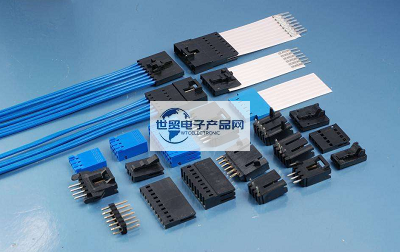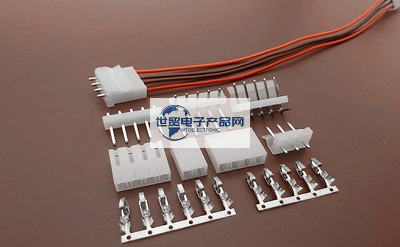Categorization:Product Information
Modern cars are more connected than ever before, with automotive electronics providing the advanced communications needed for performance and comfort throughout the vehicle, as well as a variety of safety features for drivers, passengers and the public, and electronic connectors play an important role in the outstanding performance of these critical systems. In this article, Huichengyuan connector manufacturers mainly share with you five design considerations for electronic connectors in modern automobiles!

-------------------------------------------------------------------------------------------------
1. Design considerations for ease of use and mechanical properties of automotive electronic connectors: Starting from appearance, lighting is an important consideration in automotive design. Since the early 2000s, the automotive industry has been actively moving away from halogen technology and adopting light-emitting diodes (LEDs) as headlamps. Not only do headlights illuminate the road, the connected technology also enables the headlights to adapt to the presence of other vehicles, automatically switching between high and low beams. Electronic connectors play a crucial role in the lifetime performance and reliability of LED lights, and these connectors must meet a range of requirements, including several amps of operating current, 10 watts or more of power consumption, limited package size to keep size and weight small in electronically heavy automotive systems, and able to withstand high levels of vibration and heat without compromising performance. Additionally, connectors for LED applications should also be easy and secure to install, have low height requirements for maximum airflow and heat distribution, and have strong latches for high shock and vibration resistance. 2. Reliability design considerations for automotive electronic connectors: Modern cars include a variety of comfort and entertainment applications driven by advanced connectivity solutions. Passengers and drivers can enjoy automatic navigation and other telematics, as well as climate control, electric seat heating and adjustment, device charging and a range of audio and video infotainment solutions. These functions are enabled by reliable connectors, sensors, antennas and cable assemblies that connect the vehicle and the cloud, especially the connector products must be compact and lightweight in design, while providing high current carrying capacity and high reliability. Despite the high vibration and high temperatures in the automotive environment, features such as ensuring plug-in, low profile, dual latching, and ruggedizing help the connector provide uninterrupted signal and power. 3. Safety design considerations for automotive electronic connectors: The safety and security of car drivers and passengers increasingly rely on electronic devices. Some of these solutions include airbags, hill descent control and advanced driver assistance systems (ADAS). Self-driving cars are still under development, but highly complex electronic devices are bringing such designs close to reality. Cybersecurity is another important consideration aspect for modern cars, with threats to vehicle systems, including those that power keyless entry, on-board diagnostics, and remote unlocking, requiring digital encryption technologies such as authentication and encrypted digital certificates. Safety and reliability are critical in electronic systems, and the automotive connectors used in these applications must provide a convenient fit for assembly and repair, and be designed to prevent damage to the connection during assembly, once mated, the connector must also remain connected and resist undesirable factors and stresses under harsh operating conditions. IV. Electromagnetic anti-interference design considerations of automotive electronic connectors: Another important characteristic design consideration of connectors in automotive applications is shielding electromagnetic interference (EMI). Electromagnetic interference occurs in harsh electronic environments. The amplification of electronic connections in many operating and safety systems in automobiles by passenger products such as smart phones, Bluetooth devices and even garage door openers may damage the performance of individual systems. Proper shielding and good electromagnetic compatibility can mitigate such risks. 5. Resistance design considerations for automotive electronic connectors: Powering vehicles through electronic drivetrains or electric vehicles is another aspect that increasingly defines modern vehicles. These solutions include pure electric vehicles (BEVs), plug-in hybrid electric vehicles (PHEVs) and hybrid electric vehicles (HEVs), all of which require lightweight, more compact, and more powerful drive systems. At the time of assembly, the BMS is connected to the vehicle via a decoupling bus system, such as a CAN bus, and the contact resistance at the charging input must be kept as low as possible. Therefore, connectors used in BMS applications must have the lowest possible contact resistance and remain as constant as possible. This performance is achieved by suitable contact design.

---------------------------------------------------------------------------------------------------------------------------------------------------------------------------------------------------------------------------------------------------------------------------------------------------------- If you have related [connector wiring harness and cable products] purchasing/purchasing needs or want to purchase/understand which connector wiring harness and cable product solutions we can provide, please contact our business staff below; If you have related [Connector Wiring Harness Cable Products] sales/resources and promotion needs, please click "→ Business Cooperation ←" to negotiate with a dedicated person!